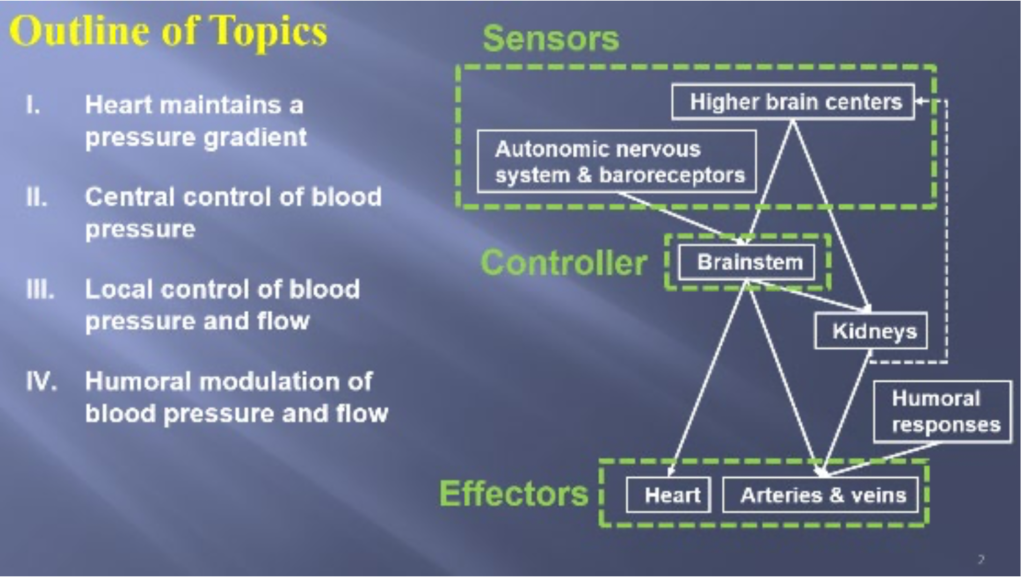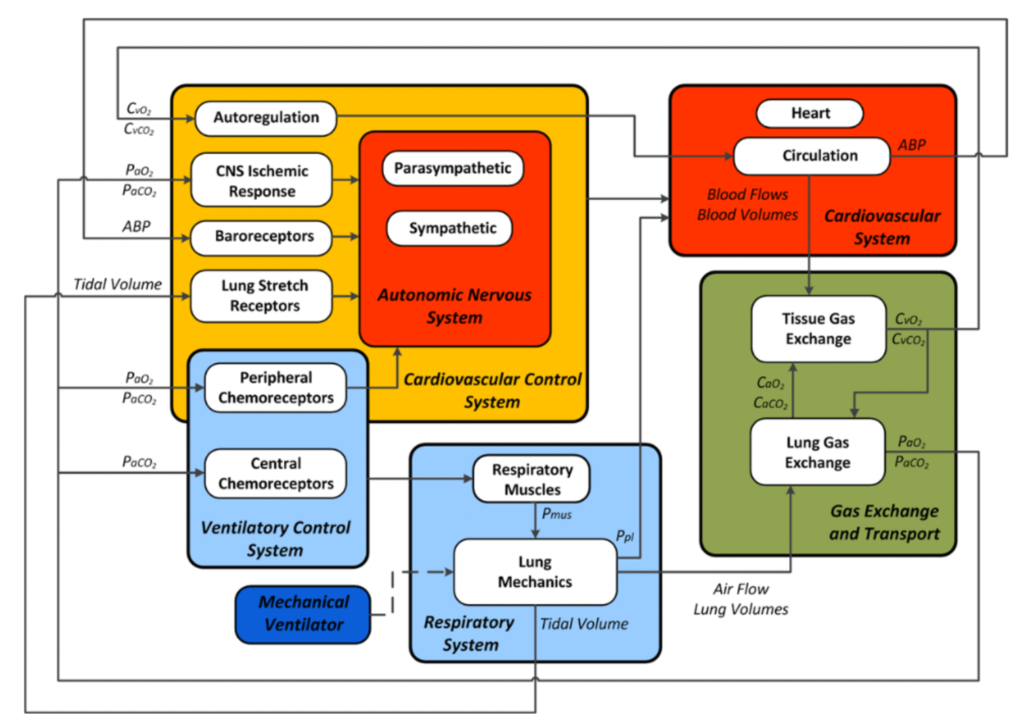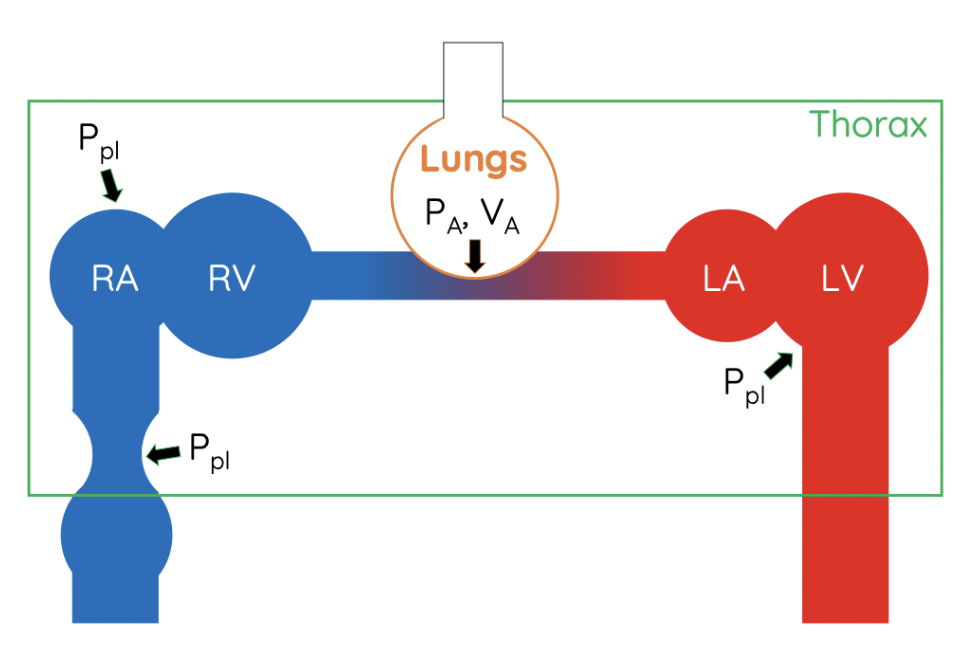This teaching workshop on cardiopulmonary modeling covers physiology and its mathematical articulation: simulation validation, use and publication expectation. This workshop takes place every odd years. The intent is not to present research, rather explain the physiology in a way that can be modeled, and then to show and teach students how to model it.
This workshop is presented by experts in the field: Drs. Antonio Albanese, Nikolaos Karamolegkos, Brett BuSha and Nicolas Chbat.
Systems Modeling (Nicolas Chbat)
Articulating the dynamics of a system (physiological or otherwise) mathematically is what is meant by ‘modeling’. Though a model of a dynamic system can be obtained in different ways, the approach we adopt here is a first principles approach, i.e. one that relies on the basic relations of physics and conservation laws.
Cardiovascular Modeling (Brett BuSha)
The focus of this session is on cardiovascular regulation, just as was presented in the EMBC19 Berlin workshop. Prof. BuSha will present the control of blood pressure by three primary mechanisms: cardiac modulation of the LV-RA pressure gradient; modulation of vascular resistance; and renal control of blood volume. He will provide quantitative examples of function for multiple sensor and effector systems.

Pulmonary Modeling (Nicolas Chbat)
The respiratory system allows the lungs to deliver fresh O2 from atmosphere to the blood that transports it to the organs, so that they live.. so that you do! Articulating mathematically how this process works allows for the understanding of how the pulmonary system functions, and how it doesn’t.

Understanding pulmonary diseases allows for better disease diagnosis and therapeutic device design. The session concludes with obtaining the respiratory system’s equations of motion, and simulating them.
Cardiorespiratory Modeling (Antonio Albanese)
In this session, Dr. Albanese will show, building on some of the fundamentals thought during the previous sessions, how to obtain an integrated physiology-based mathematical model of the whole Cardiopulmonary System that includes: cardiovascular circulation, respiratory mechanics, tissue and alveolar gas exchange, as well as short-term neural control mechanisms acting on both the cardiovascular and the respiratory systems. He will also touch upon validating such a model via published/collected data.

Cardiopulmonary Simulation (Nikolaos Karamolegkos)
In this session, Dr. Karamolegkos will use the previously introduced cardiopulmonary (CP) model and will run simulation scenarios to illustrate how heart and lungs are tightly coupled systems. His application focus will be on mechanical ventilators. He will simulate how changes in ventilation settings, or in lung mechanical parameters due to patient deterioration, can affect cardiac activity.

